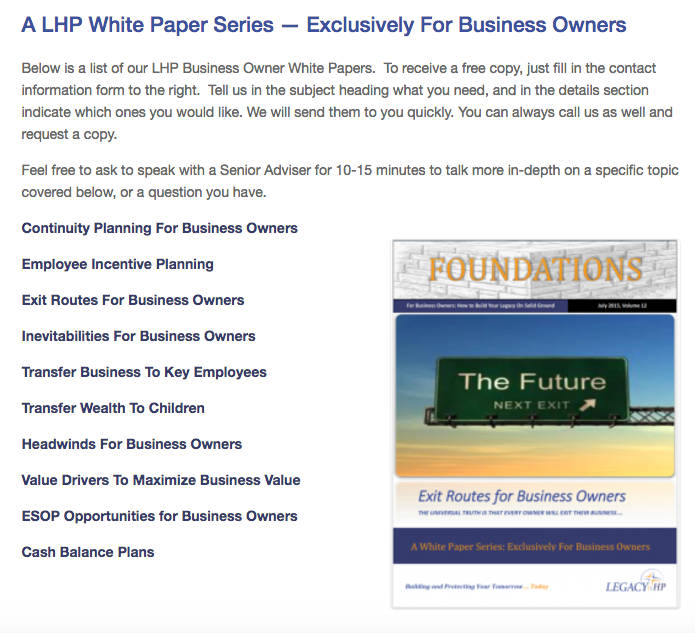A business owner who is primarily concerned with transferring ownership with minimal tax consequences and who has sufficient personal financial resources so that receiving payment for the ownership interest being transferred is not essential may be able to efficiently transfer ownership using a stock bonus. This technique can offer some interesting tax and other advantages.
As basis for our discussion on stock bonus plans, we will continue looking at the hypothetical Ted Stevens case study. As we’ve discussed in the previous articles, Ted Stevens wanted to transfer 20 percent of his $5 million S corporation to his business-active child, Sharon O’Meara, as soon as possible. Ted also did not need any money from this initial transfer of ownership to meet his other exit objectives.
If Ted transfers the entire 20 percent ownership interest to Sharon in a single stock bonus with a value of $650,000, she must recognize income equal to the value of the bonus shares if the shares are transferred free of forfeiture restrictions. Therefore, Sharon will owe tax of approximately $260,000. The company can award an additional cash bonus of $430,000 (known as a “gross-up”), which will result in an additional tax amount owed by Sharon of approximately $172,000, leaving $258,000 from the cash bonus for Sharon to cover the tax owed on the original stock bonus. Sharon will end up paying a total of $430,000 in taxes (combined tax for the stock bonus and cash bonus), and she has $430,000 in cash to pay it. Sharon will immediately own 20 percent of the company. Meanwhile, the company will have a deduction in the amount of $1,080,000 (the value of the $650,000 stock bonus plus the $430,000 cash bonus), which results in tax savings of $432,000.
Had the stock bonus not been granted at all, the company (actually Ted, since it is an S corporation) would have owed $432,000 in tax on the income earned by the business, of which there would be no offsetting deduction. Instead, a 20 percent ownership interest in the company has been transferred and the total tax of $432,000 paid by Sharon ($260,000 for the stock bonus and $172,000 for the cash bonus) essentially makes the transaction cash flow neutral to the parties, since it is the same amount that Ted would have paid had it not been paid by Sharon. It is important to recall that the undiscounted value of the 20 percent ownership interest is $1 million; therefore, a significant amount of value has been transferred without incurring additional net tax consequences (other than Medicaid tax on the bonus). The transfer also has been completed in a single year.
Additional Design Options of a Stock Bonus Plan
Stock bonus plans have additional features that add flexibility and can allow you to maintain control. For instance, when used in situations for business-active children or for key employees who are not your children, the bonus can be combined with a “substantial risk of forfeiture.” Therefore, if your employee leaves the company within a specified number of years following the bonus or if certain performance benchmarks are not attained, the bonus shares are forfeited or taken back by the company at no value. This creates “golden handcuffs” similar to vesting in non-qualified deferred compensation plans. Also, if your child, having received ownership, decides within a few years that he or she doesn’t want the business, you can regain ownership at minimal cost. This is a very important feature of stock bonus programs that isn’t available if unrestricted ownership is transferred by sale or gift.
Additionally, a bonus of a smaller amount of stock can be used to “jump start” an employee’s or child’s acquisition of the balance of the company through future stock purchases. This is a low cost way to increase the cash flow that the employee has available to make promissory note payments if additional stock is later purchased. He or she will own the bonused stock free and clear, so the cash flow from those shares can be combined with cash flow from shares being purchased to facilitate the purchase payments.
Conclusion
When you are transferring your company to a business-active child, it is important to look at the advantages and disadvantages of the three most common transfer techniques – gifting ownership, selling ownership and transferring ownership via a stock bonus. Although each technique has its own advantages, the stock bonus plan can be the most tax effective method in many cases, especially when you don’t need to receive money in exchange for the stock or the future cash flow attributable to the transferred ownership. The stock bonus also is gift tax effective because this method may not have gift tax consequences when properly designed. Additionally, the stock bonus plan can allow you to maintain control during the transfer while handcuffing the successor in his or her commitment to the ownership and success of the company. Although it may not be appropriate in every business-active child transfer, the stock bonus plan can be an advantageous exit path that can meet your overall exit objectives.
If you have any questions about transferring your company to a business-active child via a stock bonus plan, please contact us to discuss your particular situation.
Take care and have a good day,
Michael
ABOUT LEGACYHP: Our passion is our mission -- To position our clients into a positive, energized, posture -- within your businesses and within your lives -- So that you manage change confidently, take decisive action, and enjoy life's journey Today... while you enjoy building your Legacy for Tomorrow.
Notice: The information contained in this article is general in nature and is not legal, tax or financial advice. For information regarding your particular situation, contact an attorney or a tax or financial advisor. The information in this newsletter is provided with the understanding that it does not render legal, accounting, tax or financial advice. In specific cases, clients should consult their legal, accounting, tax or financial advisor. This article is not intended to give advice or to represent our firm as being qualified to give advice in all areas of professional services. Exit Planning is a discipline that typically requires the collaboration of multiple professional advisors. To the extent that our firm does not have the expertise required on a particular matter, we will always work closely with you to help you gain access to the resources and professional advice that you need.



